Blog
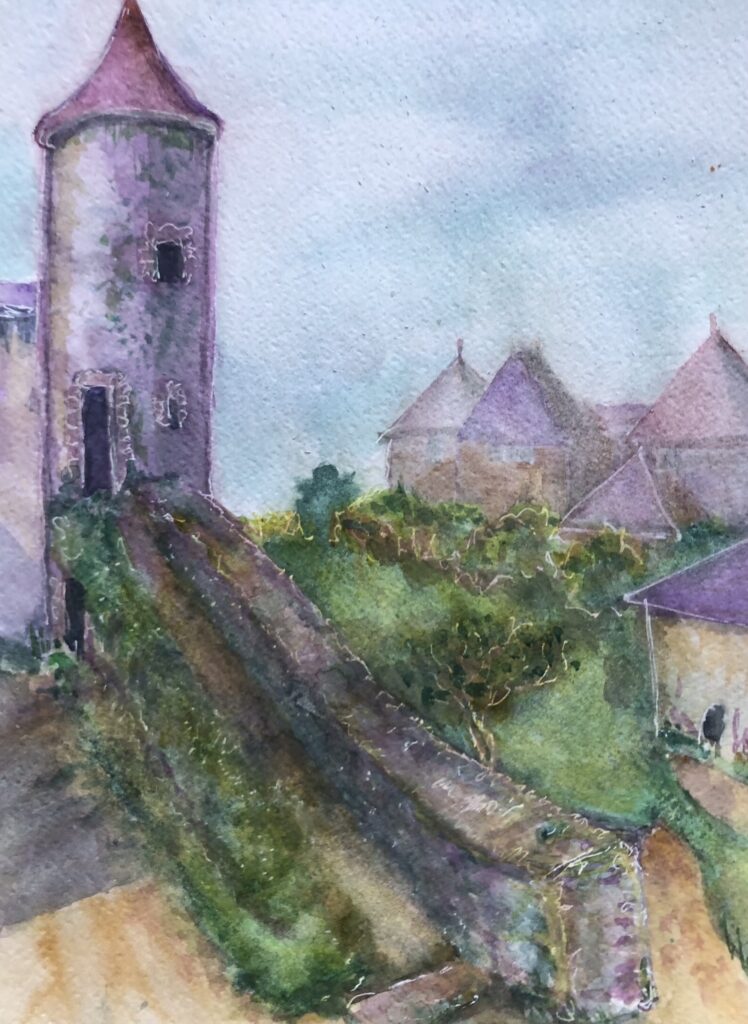
12/24/24 Helaine’s story is set in a real-life castle in France, at a time of political chaos under the rule of Charles the Bold (the Reckless), last Duke of Burgundy. Castles and villages, farms and vineyards were surrounded by vast stretches of forest inhabited by bandits, outlaws, wild men and strange beasts. Neighboring landowners were ruthless in pursuing their ambitions for more land and greater wealth through marriage but also by force, employing mercenary bands, such as the widely feared Swiss Confederacy (who still exist today–though with a more benevolent purpose). Back then, the Swiss band were merciless.
Helaine’s home, Berzé le chatel, was founded about 1000 AD, strategically placed to dominate the lands around it. As it grew, it became more massive; the builders constructed a “castle under the castle” where provisions and arms were stored in case of siege. The winding corridors allowed Helaine to escape into the outside world when the constraints surrounding her grew unbearable…
JS loved painting this not-so-obvious way out, though she doesn’t think it’s the one Helaine used…
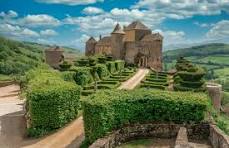
12/30/24 A glimpse of the main castle at Berzé le chatel with a wide expanse of gardens–there’s also an impressive entrance gateway that you can’t see here. You can just catch sight of one of the donjons of the curtain wall in the lower right corner. If you watched the film The Last Duel, staring Matt Damon and Adam Driver, then you saw the nitty gritty inside workings of a long established castle, and how it had been designed and built to protect the inhabitants and intimidate the neighbors. Helaine’s bedroom is high up in the tower overlooking the gardens, where she can see guests or messengers arriving…
1/06/25 As her father’s heir, Helaine is trying to disentangle political demands and religious beliefs. It’s a time of change, where the Medieval world is fading and the Renaissance is pushing at its heels. Helaine is bound by the subtle code of her love for her father and the demands of obligation to him. But it’s a rivalry with her childhood friend that tips her over into rebellion, and into finding a greater joy than she had ever dreamed existed. She meets legendary figures out of a time of myth and magic, a unicorn and his wild boy who are wandering and lost in her present day and time…
1/13/25 The Wild Series The next installment of Helaine’s story is already taking shape. Wild Mother, Wild Child is backlit by the tapestries The Lady and the Unicorn that hang in the Cluny Museum in Paris. And JS is playing with the Apocalypse tapestries housed in the Chateau Angers as inspiration for the final part of the trilogy, Wild Crone. Hmmm. Sounds intense.
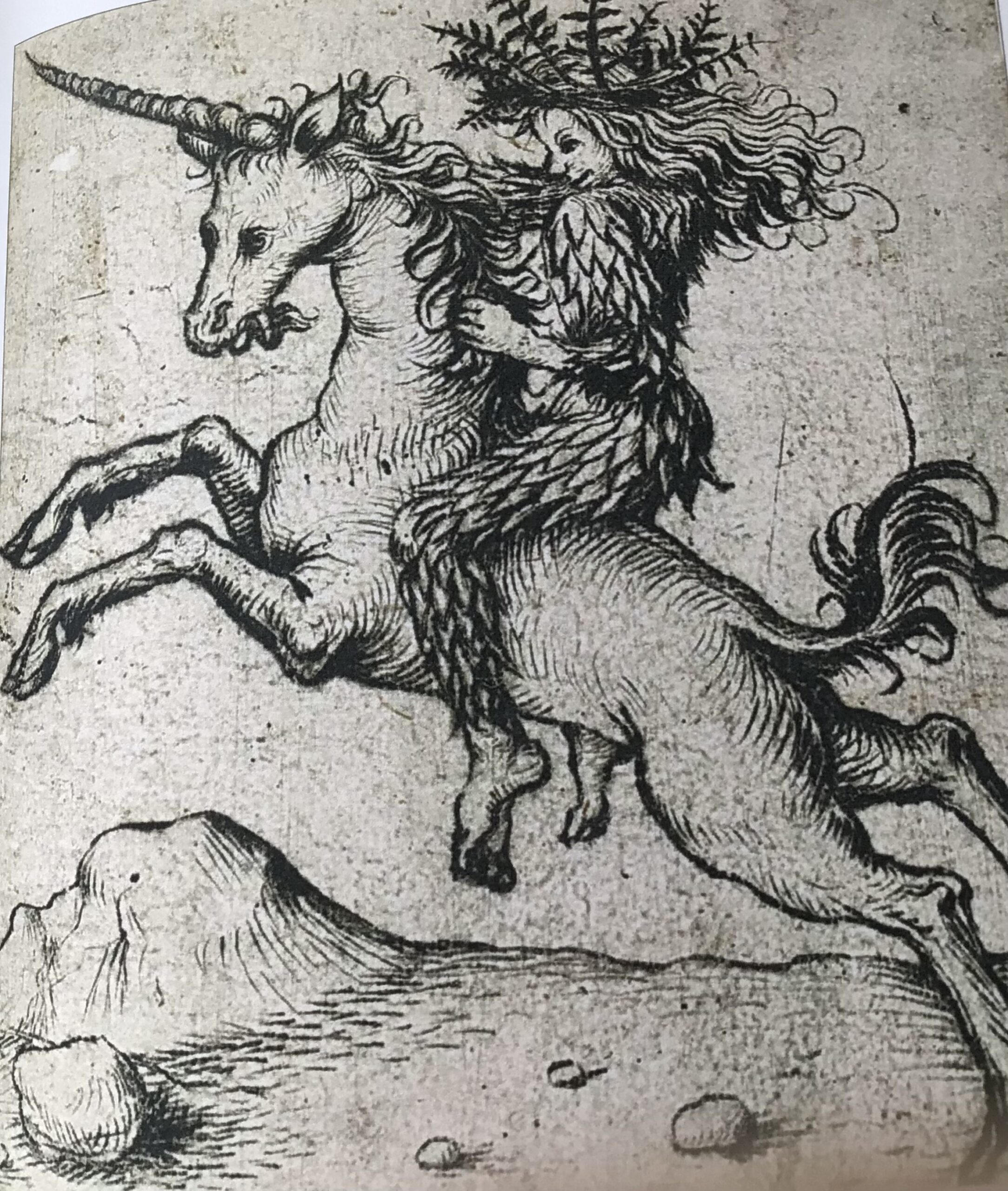

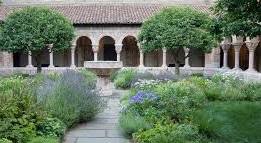
The Gardens at the Cloisters
home of the Tapestries
just on the edge of New York City
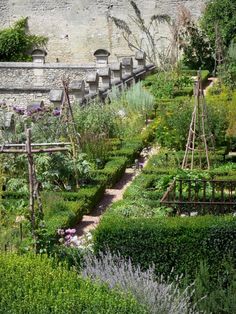
1/22/25 Over the years, a series of tiered gardens grew up inside the curtain walls of the castle. Today they seem very formal, but JS imagines Helaine’s father making an exuberant garden there for his bride Genevre. The beds are spilling over with herbs and vegetables; seating is made by packing soil into berms and growing grass over them. Different plantings are separated by hedges or by wattled fences, often overgrown with flowers, making a series of secret gardens. It smells delicious, and is buzzing with the hum of summer bees. And bee hives mean honey, and sweetness…
The hortus conclusus, or enclosed garden, carried high symbolism in religious doctrine and mysticism of the time. Its depiction in Christian art from the Middle Ages onwards often suggests purity. It is shown walled, implying impenetrability. Even the beauty of the garden emphasizes the trap of expectation in which Helaine is bound. Not so sweet.
And the unicorn also. He finally takes his rest in the last tapestry, smiling and chained to the tree of immortality.

1/25/25 Medieval thought processes and paradoxes
On virginity
- A virgin bride assures a nobleman that his progeny are his own
- A virgin is valuable because she is untouched and without sin
- Only a virgin can call the unicorn, who has no choice but to respond
On unicorns
- A live unicorn can purify water with his horn
- Powdered horn from a dead unicorn can call the dying back to life
- The unicorn as a symbol of Christ can be venerated or hunted
On Wild Men
- Wild men guard herds of unicorns in the forests of medieval Europe
- Wild men are the remnants of the priests of the old religion
- Wild men are robbers, outcasts and the insane, and deserve death

1/30/25 Here's a picture of the tapestries hanging in the Cloisters Museum, just as Jehane first saw them...

2/07/25 This 14th century tapestry shows a Wild Man and a Wild Woman frolicking in the forest with some friendly but possibly demonic beasts, demonstrating the enduring nature of belief in the existence of Wild Men during Medieval times. The local rabbits are not alarmed at all…
A real Masque des Hommes Sauvages was held at the Court of Charles VI of France on 28 January 1393 in Paris. Tragically, the costumes were made of fur and hemp, and caught fire…
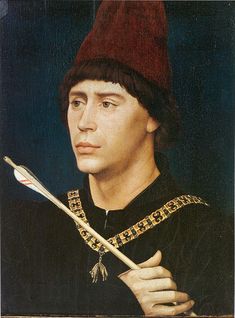
2/17/25 Antoine Le grand batard (1421–1504)
Antoine was brought up with his younger half-brother, later Charles the Bold, the last Duke of Burgundy; he was a favorite among the many natural children of Philip the Good.
Antoine fought on several campaigns for his father, and also led a crusade against the Moors in 1464. He saved Charles’ life at Montlhery (1465), and supported him at the siege of Dinant. After their father’s death, Antoine was fiercely loyal to the new duke.
It seems Antoine inherited his father’s sexual intensity; at a chapter of the Golden Fleece in 1468, he was castigated for fornication and adultery, in spite of his “valor, prowess, and prudence.” But Charles trusted Antoine implicitly, and sent him as ambassador to many European powers, including the Vatican.
In 1476-77, he fought alongside Charles in the three final battles of Grandson, Murten, and Nancy. Charles was killed and Antoine handed over by the Duke of Lorraine to the King of France. Antoine helped Louis stabilize the precarious political situation by arranging the marriage of Duchess Marie, only child of Charles the Bold, to Maximilian of Austria.
He was an avid collector of illuminated manuscripts, and owned at least forty-five volumes, most notably an illustrated Froissart in four volumes.
The young King Charles VIII of France legitimized Antoine in 1485. He died in 1504 at the grand age of 83 years old.
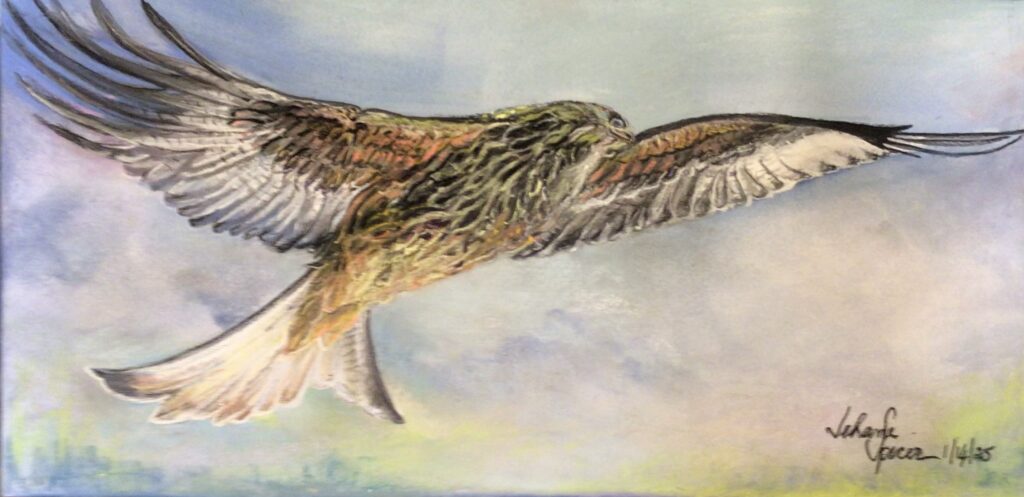
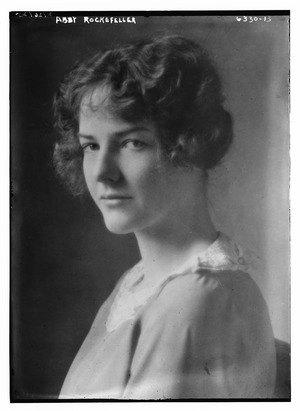

3/01/25
Abigail Aldrich Rockefeller (1874-1948)
Abby married John Jr, in 1901 after a five year courtship. She helped finance the Red Cross when the US entered the first World War, founded the YMCA, and later the Museum of Modern Art. She helped her notoriously introverted husband to tolerate social interaction more easily…
John Davison Rockefeller Jr. (1874-1960)
Before his death in 1960, John Rockefeller Jr gave away nearly half his fortune to build churches, medical centers, and universities, and for the preservation of historic sites and parklands. He kept the tapestries hanging in his study, but then built the Cloisters Museum to house them; they moved to their new home in 1936.
Ancient photograph of the tapestries at the chateau de Verteuil, about 1890--1900
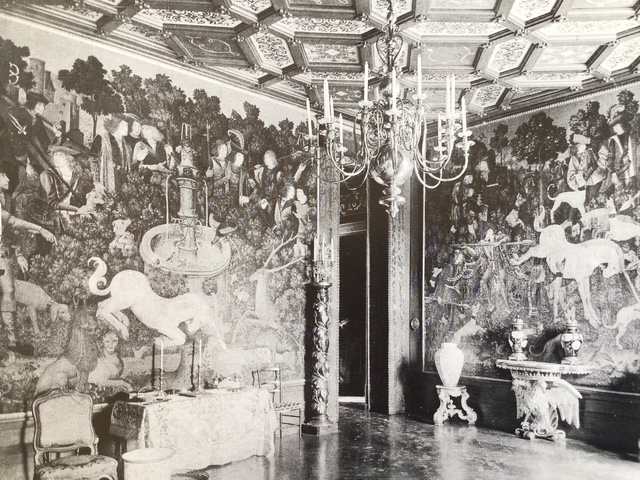
3/18/25 Maiden taming a unicorn for two hunters, miniature painting in a manuscript bestiary, about 1170, New York, Pierpoint Morgan Library. The early date illustrates how profoundly the legend of the maiden and the unicorn persisted in European belief systems.
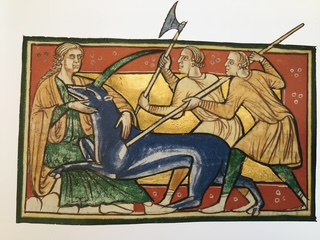
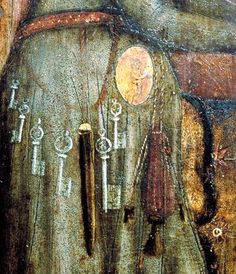
3/25/25 On the evening of St Valentine’s Day, the Seigneur arranges an entertainment for Helaine and the rest of the household–a welcome break from worry about the growing threat of Ivo de Grandfief and his mercenary band, the Swiss Confederacy, at the borders. And he gives Helaine the keys to the castle to wear proudly, dangling from her waist. She is now at long last the acknowledged chatelaine of Berze le chalet, an important step in her coming-of-age journey.
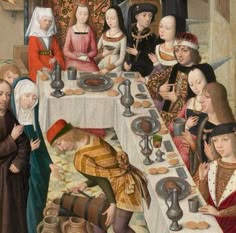

4/03/25 Members of the household at the Valentine’s Day feast in the great Banqueting Hall. Notice the splendid hammer beams in the great ceiling…